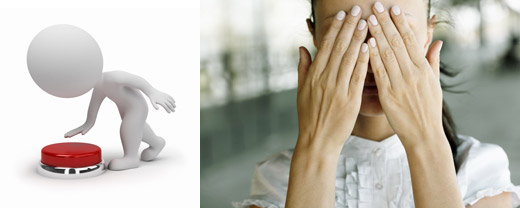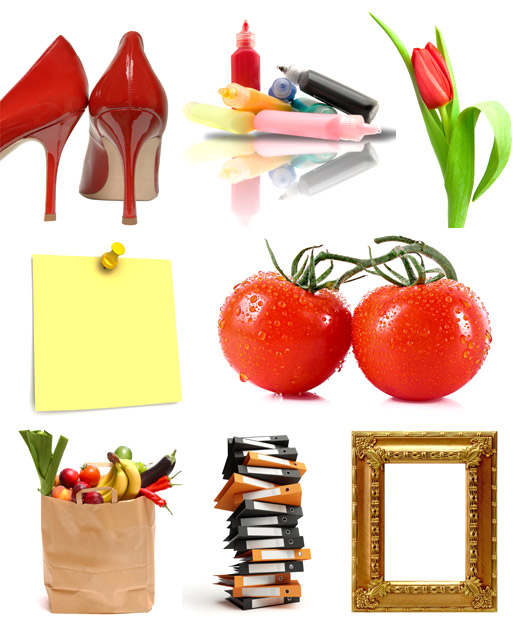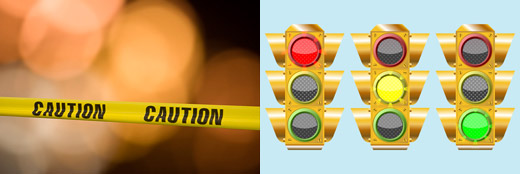The Microstock Blacklist
Posted Wednesday, 25 May 2011 by Allison Hobbs in
Photography,
Inspiration,
News
If we had a blacklist, these subjects would be on it. This, and other "non-technical" reasons for image rejections.
For those microstock photographers who are active in the "blogosphere", you are probably well acquainted with the subject of blacklisted subject matter. Some agencies state very clearly which subjects are in over supply for their particular collection. Some have "blacklists" and some don't. In either case, a quick tour through the on-line microstock discussion forums makes one thing crystal clear: the Internet is swirling with conspiracy theories about image rejections. So let's take this opportunity to dispel some of the rumors and review just why some agencies do, in fact, have blacklists.

© AnatolyM, Kuzma
As an image editor, I can say with absolute certainty that the act of assessing a stock image is not a linear process. It takes into account a number of factors and layers. Subject matter is certainly one of the ingredients, but it is not the only ingredient. So the first misconception of the conspiracy theorists is that subject matter alone is often the sole reason for an image to be rejected. Even for agencies that do have an embargo on pictures of cats, or views from an airplane window, it would be difficult to turn away a spectacular image of either subject.

The above images depict two subjects that are widely considered "overdone", but any professional editor would be hard pressed to reject these ones given their excellent technical and aesthetic quality. © csguy, klagyi, monia, erikdegraaf
There is a more likely explanation for common subjects to be blacklisted. Most agencies receive an extraordinary number of mediocre images of these subjects. Only images that meet or exceed the "best of the best" would be considered as an addition to the collection. By listing unwanted imagery up front, the agencies are being proactive in their attempt to reduce the volume of unsuitable pictures from being submitted at all. It's important to stress the fact that every single image you upload (and this includes "similars") must be evaluated by an editor for aesthetic and technical quality at the expense of the agency. This is important: rejected images are actually a cost to agencies – so they don't take the matter lightly. As a photographer, the biggest favor you can do for yourself (and your agency) is to be objective about your own work. Is the reason for rejection purely a matter of blacklisted content, or is it a combination of poor styling, and dull lighting within in a highly competitive category?
One of the most common image treatments we see submitted to Crestock is a simple item isolated on a white background. Within this popular treatment, we see an unbelievable volume of items being repeated. If we had a blacklist, these props would definitely be on it: hot peppers, women's shoes, yellow sticky notes, single fruits and vegetables, flowers, empty picture frames, office/ art supplies, telephones, and snapshots of your breakfast/ lunch/ dinner.
If you're planning a studio session, it's always advisable to do a few searches through your competition to see what you're up against. Editors see thousands of images every day, and as a result, your material is always being assessed in the context of the entire collection. By doing a little research in advance of your shoot, you can identify which areas are highly competitive or, alternatively, are in need of fresh material. If you are going to shoot tomatoes on seamless, for example, your prop-styling and lighting will need to be flawless for the images to stand a chance.

The above images represent "the best of the best" when it comes to isolated items on a white background. Don't be fooled by their simplicity. Proper lighting ratios give the objects volume, while creating a clean, white background. The objects themselves are well-styled, and placed strategically to create interesting compositions. If you are shooting "blacklisted items", they will have to meet or exceed this caliber in order to be accepted. The comments you could expect to receive in your editing feedback for mediocre images of the same subjects could include "visually uninteresting", "stronger images accepted", "poor styling", or "poor lighting/ contrast".
© Terex, fanat79, loskutnikov, Ampirion, serezniy, pkruger, 3desc, Colour59
Objects photographed against a white background are popular with photographers and designers alike. For a photographer, it presents an opportunity to set up a single lighting scenario in studio and yield a huge number of images in a relatively short period of time. For designers, these images are attractive because the items are easy to isolate and combine with other elements, or to close-cut for use on the web.
Since so many photographers are inclined to photograph this type of material, here are some tips to make sure yours make the cut:

© snokid, robertosch
Beware of trademark and copyright concerns! If you are photographing objects and they are not in the context of a greater scene, you have to be very cautious when selecting your props. Modern toys, board games, electronic devices, currency, postage stamps, passports, the soles of shoes, credit cards, jewelry, maps, globes, books and newspapers are all examples of problematic props that we see submitted on a regular basis. These items isolated on white are essentially a product shot and cannot be accepted as a stock photo without a property release from the owner of the intellectual property (i.e. manufacturer, author, or issuing government agency).
Check your files at 100% for sharpness and cleanliness. Once you have your lighting and styling down pat, be sure to view your files at full size before uploading them. Too often our editors receive images that look stellar in the preview window, but at 100% they are out of focus, have dust, or very obvious technical problems such as banding or artifacts.
Send fewer similars. It's tempting (and inexpensive) to upload lots of similars when you have photographed a number of minor variations of a subject. Many photographers will argue that it's better to supply a hundred variations and let the customer decide which is best. But that is inconsiderate to customers whose time is just as valuable as yours. And you should be aware that this practice could actually be very detrimental to your financial interest because many agencies have systems in place to restrict accounts for photographers who continually upload too many similars.
Processing and dust-busting your high-res files to an acceptable level is time consuming and labor intensive. Then you have to keyword and caption them. So why invest time working on a multitude of identical images that will surely be whittled down by an editor? By spending the time up front editing your shoots, checking focus, and properly processing your digital files, you will save yourself an exceptional amount time in front of the computer that you could be spending behind the camera.
Poor captions and keywords are common causes of mass image rejection. The importance of strong keywording cannot be stressed enough. If clients can't find your images, they certainly can't purchase a license for them. Too often photographers mass keyword (also known as "keyword spamming") in an attempt to upload a lot of images quickly. This practice can be very detrimental to your sales, and it is one of the top reasons for images being rejected. Even if the images get past an editor with inappropriate or misspelled keywords attached, the images will never see the light of day. And nothing frustrates an art buyer more than putting in targeted search terms and getting a random selection of unsuitable images in their results.
Although having images rejected can be frustrating, try not to be discouraged. Agencies want and need your images – but we want your best, because that is what our clients want. By listening to your editing comments and striving to take your workflow and image quality to the next level, you will ultimately save time and make image rejections a thing of the past.